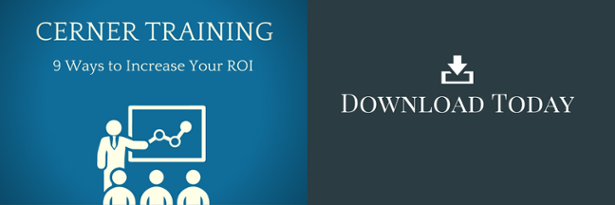Cerner Consultant Corner: Mike McMahon Interview

 As a registered nurse with over twenty-five years of experience in the healthcare arena, Mike McMahon has excellent clinical IT experience with Cerner Millennium; CPOE, PowerChart, FirstNet, and Maternity PowerChart. Mike is a lead Analyst who has the expertise replacing an existing electronic documentation system with Cerner Millennium PowerChart at the University of Washington Medical Center and Harborview Medical Center. He has significant CPOE project experience with focus on best practice and Meaningful Use doctrine. He is experienced with Patient Management and Rules in Cerner he has gathered requirements, build, and tested initial rules using Discern Expert while at University of Washington and Tenet Corporation.
As a registered nurse with over twenty-five years of experience in the healthcare arena, Mike McMahon has excellent clinical IT experience with Cerner Millennium; CPOE, PowerChart, FirstNet, and Maternity PowerChart. Mike is a lead Analyst who has the expertise replacing an existing electronic documentation system with Cerner Millennium PowerChart at the University of Washington Medical Center and Harborview Medical Center. He has significant CPOE project experience with focus on best practice and Meaningful Use doctrine. He is experienced with Patient Management and Rules in Cerner he has gathered requirements, build, and tested initial rules using Discern Expert while at University of Washington and Tenet Corporation.
Q. You have wide-ranging experience in many disciplines. From that broad point of view, what kinds of things have you learned about best practices in the field of electronic medical records?
A. Make sure the work process is defined and in place before EMR.
When gathering requirements make sure to understand the concept behind the request. Many times, an end user will request a specific behavior or action, yet they do not understand how the system works and/or limitations. You need to validate what the outcome should be and then assist in the design of system.
Document, Document, Confirm, and Document. You need to get it all documented, what and who, and then follow up to make sure the initial work is meeting the end users expectations. On the same note, how many of us have come into a functioning system only to find out that there is no documentation of the build work? Now for changes, you not only need to make the changes, you need to craft an original design document and note what is being changed.
Q. How did you become interested in Cerner?
A. It was not Cerner per say, but EMR. The facility I hired into, had contracted to implement Cerner across the enterprise. I was able to take advantage of the openness of the Cerner product and the training tools to either see how to complete build work, or reverse engineer a result. I frequently am on UCern for help/ideas when I am solving an issue.
Q. Could you tell us something about your current Project you are on?
A. I currently am working for a governmental agency that is looking to implement Cerner across the region. There is limited PowerChart/Scheduling use at this time, but the source of truth currently remains with paper records.
Q. Could you describe the scope of the project in more detail?
A. It is a large-scale project to bring the complete region into one system for documentation and review. It involves 10+ hospitals and 100+ clinics. However, I currently am responsible for existing daily operations, specifically in the area of interfaced lab orders, and then assisting with any PowerChart focused issues. Currently, the Cerner system interfaces with a number of SunQuest lab system and a GE system for radiology. My other responsibility is to train/mentor new permanent employees to Cerner orders, with a focus on interfacing with other systems. They then move onto the larger project.
Q. How did your career experience help prepare you for success in this project?
A. I have 20+ years in critical care, emergency, and trauma nursing so it is safe to say that I have a fairly good understanding of the clinical environment. But that is not to say I know the specific environment that an end user may be in, so my area specific understanding is dependent on local experts. I also have 8 years working with FDA cleared medical devices (advanced external monitor/defibrillators) and it was in this area that my skills to gather requirements and documentation were honed. All our business communication and documentation had to be stored and retrievable for >20 years. I did a lot of translating between the end users (nurses, Paramedics, EMTs) and the engineers who designing/building the devices and this skill also comes in very handy when explaining to the PowerChart user how and why action occur.
At my pre-consulting job, I was responsible for any activities where PowerChart interfaced with an external system. For orders, interfaces were established with the laboratory, radiology, and pathology systems, and for clinical documentation there were interfaces with the bedside monitor systems. Also, by happenstance, I was asked to build the initial Discern Expert rules and really enjoyed that aspect. Creating rules to address an issue is like working on a giant puzzle where you can reshape some of the pieces.
Q. What are you excited about for the future?
A. As the systems become more integrated, I look forward to more clinical decision tools using incoming patient data to suggest/highlight treatment options. Many medical/nursing treatments are based on a set of known criteria, and alerting the staff to a potential issue early can improve patient outcomes. For example, I have written a number of rules that assess emergency department patients for signs of early sepsis. When certain criterion is met, the rules alert the ED staff and place powerplans on the patient’s chart in a pending status. Post implementation analysis showed a clinically significate improvement in time to IV fluid adminstration and initial dose of antibiotics.

